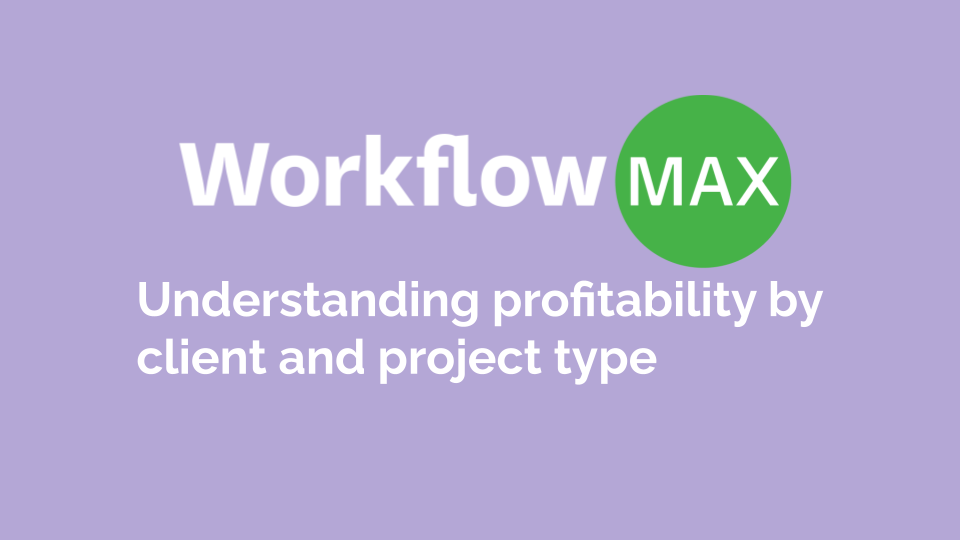TL;DR: Understanding profitability by client and project type empowers architecture and service firms to allocate resources wisely, optimise operations, and grow strategically. Key metrics—like gross/net profit margin, utilisation rates, and AGI per FTE—reveal where value is created. WorkflowMax turns these insights into action with real-time dashboards, flexible invoicing, and custom reports. From refining pricing strategies to cutting costs and improving team efficiency, data-driven decision-making ensures long-term profitability and stronger client relationships.
Understanding profitability by client and project type drives business growth. When you analyse financial performance at these levels, you can better allocate resources and identify your most valuable clients. This insight powers both success and staying power.
What makes a project profitable? It starts with the basics—costs and revenue. Operational efficiency matters too. When you streamline processes, productivity rises and waste falls. Each element affects your bottom line and shows which projects and clients boost your business.
In today's competitive landscape, precise profit data leads to more intelligent choices. You can spot exactly where to invest your time for the best returns. You can create focused strategies that build loyalty and lasting relationships when you identify profitable clients.
Metrics for assessing project profitability
involve understanding key financial indicators that reveal project efficiency and help optimise operations.
- Gross Profit Margin: This metric shows the percentage of revenue exceeding the cost of goods sold. Calculate it by subtracting the cost of goods sold from total revenue, then dividing by total revenue. It highlights how effectively projects generate profit.
- Net Profit Margin: This measures the percentage of revenue remaining after all expenses. To find it, subtract total expenses from total revenue, then divide by total revenue. It indicates overall profitability and helps identify areas to reduce costs.
- Productivity: These reflect how effectively teams use their available hours. Calculate them by dividing billable hours by total available hours. High utilisation rates mean efficient resource allocation, boosting profitability.
- AGI: FTE Ratio: This ratio evaluates how much Adjusted Gross Income (AGI) each Full-Time Equivalent (FTE) generates. Divide AGI by the number of FTEs. It's crucial for understanding staff productivity and financial efficiency.
Tracking these metrics uncovers inefficiencies, guiding informed decisions to improve profits. Regular analysis ensures businesses stay agile, adapting to changes and seizing opportunities for growth.
Leverage our Data Driven Business Performance Reporting to translate these metrics into actionable insights and customisable dashboards.
Strategies to enhance profit margins
Optimising profit margins involves strategic actions that boost overall efficiency and financial health. Start by refining your pricing models. Align them with market dynamics and perceived client value. This requires understanding your costs, competitive landscape, and client expectations.
Cutting overhead costs is crucial. Conduct regular expense audits to identify unnecessary spending. Automate processes using technology to reduce labour costs and improve efficiency. WorkflowMax's comprehensive time tracking and centralised document management features can help streamline operations, saving time and resources.
Negotiating supplier contracts is another effective strategy. Seek better terms or discounts to lower expenses. Outsource non-core activities like accounting or IT to specialised providers, freeing up internal resources for core business tasks.
Improving operational efficiency is key. Utilise resource management tools to optimise team utilisation and track project progress. WorkflowMax’s real-time performance dashboard offers insights that enable quick adjustments and strategic planning.
Implement energy efficiency measures to cut utility costs. Investing in energy-efficient equipment not only saves money but also contributes to sustainability goals.
Regularly evaluate your pricing strategies. Consider value-based pricing or dynamic pricing to ensure your quotes reflect the actual value delivered to clients. This ongoing assessment helps maintain competitiveness and profitability over time.
Pricing strategies for profitability
Crafting the right pricing strategy is crucial for maximising profitability in service businesses. Various approaches can be tailored to fit different needs.
- Cost-Plus Pricing: This involves calculating the total cost of delivering a service and adding a specific profit margin. It's straightforward and ensures costs are covered.
- Value-Based Pricing: Prices are set according to the perceived value to the client. This approach requires understanding client needs and expectations, aligning prices with the value delivered.
- Dynamic Pricing: Adjust prices based on market demand or client urgency. This flexible strategy helps capture maximum revenue in fluctuating market conditions.
Regularly evaluating and adjusting pricing strategies is essential. Conduct thorough market research to understand competitive positioning and client expectations. Learn how to balance attracting customers with profitability in our guide to competitive pricing. Align pricing with perceived value to maintain competitiveness.
Technology can support these efforts. WorkflowMax offers robust reporting tools, providing insights into productivity and profitability. Use real-time data to make informed decisions on pricing adjustments.
Stay adaptable. Monitor market trends and competitor actions. This ongoing assessment ensures your pricing remains attractive while supporting long-term profitability.
Leveraging technology for profitability insights
Technology helps businesses understand profitability by client and project type. Real-time dashboards show instant insights into how each project affects your bottom line. Our customisable features let you create reports that highlight key metrics, making it easier to make data-driven decisions.
Flexible invoicing ensures accurate billing. With various invoicing options, you can match billing to project progress and client expectations. This reduces payment delays and improves cash flow, directly impacting your profitability.
Centralised document management streamlines operations. Keeping all project documents in one accessible location improves collaboration and protects vital information. This efficiency saves time and resources, contributing to better financial results.



.png?width=704&name=How%20to%20write%20an%20effective%20client%20brief%20Blog%20Masthead%20Template%20(6).png)
